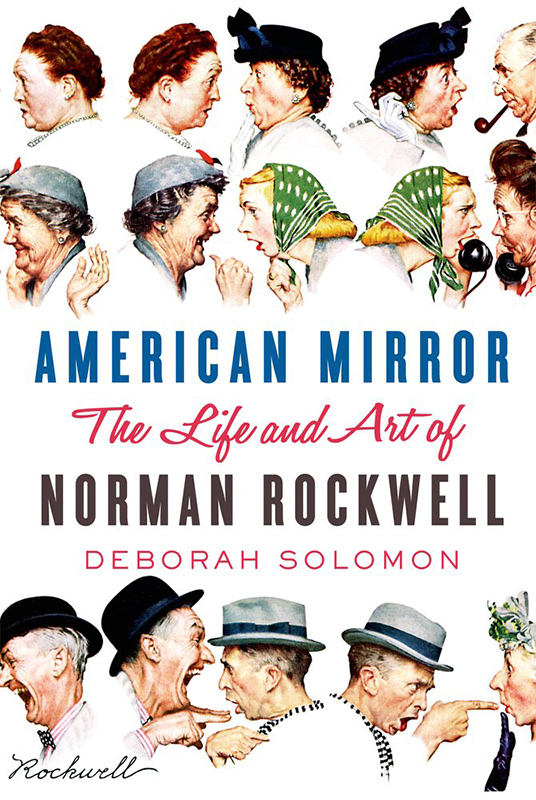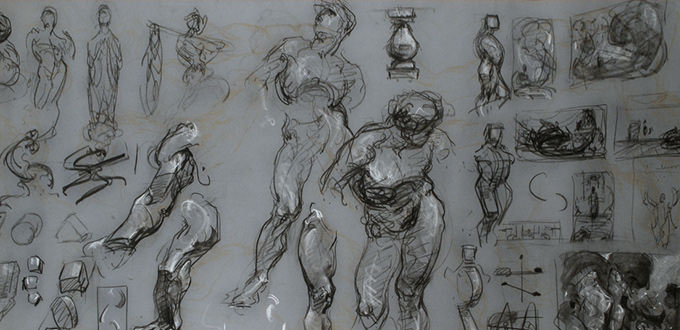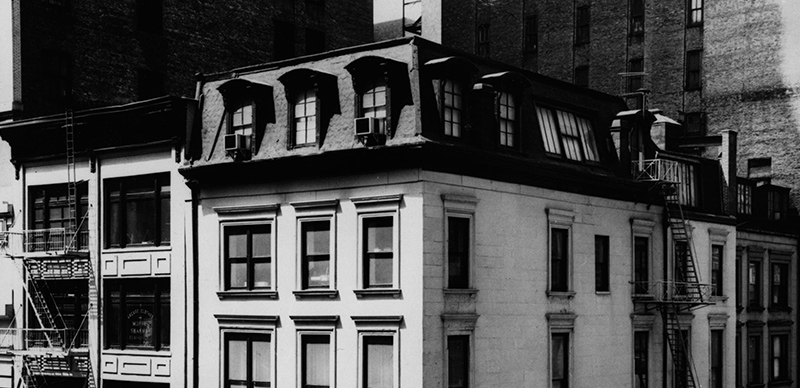 Deborah Solomon’s American Mirror: The Life and Art of Norman Rockwell is an impeccably researched and highly readable biography of a man that many Americans feel they already know. Over the course of 33 chapters and over 400 well-referenced pages, Solomon works hard to illuminate the contrasts between the Norman Rockwell of our collective national consciousness and the Norman Rockwell whose work helped to shape that consciousness. Through extensive description and analysis, Solomon makes a convincing argument for a more nuanced understanding of Rockwell as an artist, as well as of the content and context of his remarkable legacy. Essentially, she presents him as non-Rockwellian while carefully re-defining the term so that, in fact, it fits.
Deborah Solomon’s American Mirror: The Life and Art of Norman Rockwell is an impeccably researched and highly readable biography of a man that many Americans feel they already know. Over the course of 33 chapters and over 400 well-referenced pages, Solomon works hard to illuminate the contrasts between the Norman Rockwell of our collective national consciousness and the Norman Rockwell whose work helped to shape that consciousness. Through extensive description and analysis, Solomon makes a convincing argument for a more nuanced understanding of Rockwell as an artist, as well as of the content and context of his remarkable legacy. Essentially, she presents him as non-Rockwellian while carefully re-defining the term so that, in fact, it fits.
Solomon is familiar to many New Yorkers from her time as the Questions For columnist at the New York Times Magazine, and her knack for asking the right questions is apparent in her approach to writing about a subject as reticent as Rockwell. The fastidiousness of her research proves doubly sharp when she examines implications about Rockwell—with regard, for instance, to his relationships with men and boys—that she cannot substantiate. As a journalist and historian, Solomon knows that the dearth of evidence in these cases stands in stark contrast to her impeccably sourced research. By mentioning it anyway she addresses any speculation while reminding us that there is much about Rockwell we’ll probably never know. The result is a work that simultaneously fact-checks, contextualizes, and gives narrative form to Rockwell’s actions and society’s assumptions about him. American Mirror is a pleasure to read because of how neatly Solomon has fused these factors.

For artists and art lovers, Solomon’s art historical frame of reference provides especially exciting insight. She defends Rockwell against his critics, highlighting his distinctive ability to draw from important art and smuggle its values to the mainstream. Rockwell’s ability to harness his historical influences while producing commercially viable art was due in no small part to his time as student at the Art Students League, where he honed his technical precision as a monitor for George Bridgman and learned a philosophical framework for commercial illustration from Thomas Fogarty, Sr. Solomon explores the development and realization of these influences in the larger contexts of Rockwell’s background and environment, and walks the reader through the changing responses to the works that he produced.
By exploring the ways that Rockwell’s work could be compelling for artists and non-artists alike, American Mirror follows his lead in surreptitiously bridging the gap between those groups. In the course of exposing and explaining his personal imperfections, Solomon demonstrates the imperfections of the world around him. By extending this attention into an investigation of the artwork itself, Solomon’s narrative cracks the façade of Rockwell’s illustrations as relics of an idyllic, bygone America. What remains is a reflection still, but of something more nuanced, ambiguous, and authentic.
Deborah Solomon will speak about American Mirror in the Art Students League’s Phyllis Harriman Mason Gallery on Tuesday, January 28, at 7:00 PM. The lecture is free and open to the public.




